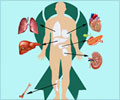In the pursuit of robotic bladder transplantation, significant progress is detailed in a new study.

Robotic Bladder Autotransplantation: Preclinical Studies in Preparation for First-in-human Bladder Transplant
Go to source). "Our study is the first report of bladder auto-transplantation in heart-beating, brain-dead human research donors as a necessary preparatory step toward clinical bladder transplantation in living patients," comments Inderbir S. Gill, MD, of Keck School of Medicine, University of Southern California, Los Angeles.
Preclinical Studies to Prepare for First Clinical Bladder Transplant
Although transplantation is an accepted treatment for many types of organ failure, human urinary bladder transplantation has never been performed.‘Pioneering efforts in the development of robotic bladder transplantation mark the initial strides toward this innovative medical technique.
#Transplantation, # BladderTransplantation, #Robotic
’





That reflects, in part, the daunting technical challenges entailed in such a procedure, including the difficulty of obtaining surgical access to the deep pelvis and the complex anatomy of the blood vessels in that area. Patients with terminal bladder conditions which render the bladder unusable may undergo surgery to remove the bladder (cystectomy).
This is followed by some type of diversion procedure to restore urinary function, typically using a segment of the patient's bowel tissue. Although these reconstructive procedures have a high success rate, they carry a substantial risk of short- and long-term complications.
Dr. Gill and his team, including Dr. Nima Nassiri, performed a series of fundamental pre-clinical studies to develop the technique of robotic bladder transplantation.
Their experience included three models of auto-transplantation – removing the bladder and associated tissues, including arteries, veins, and ureters; preparing it as if from a human donor; and transplanting the prepared organ back into the donor.
Advertisement
Human cadaver model. This was followed by a pulsatile human cadaver model, designed to simulate blood flow in a living patient.
Advertisement
Techniques developed in the animal and cadaver models were successfully applied to the beating heart donors. In all three models, operative times for robotic auto-transplantation decreased with experience. In the beating-heart donors, total surgical time decreased from 10.5 to 4.7 hours.
Bladder Transplant Could Be A 'Viable Treatment Option' For Selected Patients
Three out of four attempts at robotic auto-transplantation in beating-heart donors were successful, resulting in good blood flow to the transplanted bladder. In one case, the donor was maintained on life support for 12 hours to confirm the continued viability of the transplanted bladder.Compared to open surgery, the robotic approach was felt to significantly facilitate donor cystectomy (bladder removal) surgery because of its superior technical access to the deep pelvis and blood vessel control.
The online version of the article includes a link to a video where urologists can view key steps of the robotic auto-transplantation technique. Based on this rigorous pre-clinical developmental work, Dr. Gill and colleagues are preparing for the initial feasibility clinical trial of human bladder transplantation.
If the technique of bladder transplantation can be successfully developed and refined, it could become "a viable treatment option in a minority of well-selected and well-counseled patients," the researchers conclude.
They emphasize the many unanswered questions that remain – including the long-term functioning of the transplanted bladder, the need for lifelong immunosuppressive therapy to prevent organ rejection, and patient acceptance of bladder transplant versus standard urinary diversion procedures.
Reference:
- Robotic Bladder Autotransplantation: Preclinical Studies in Preparation for First-in-human Bladder Transplant - (https://www.auajournals.org/doi/10.1097/JU.0000000000003620)
Source-Eurekalert















